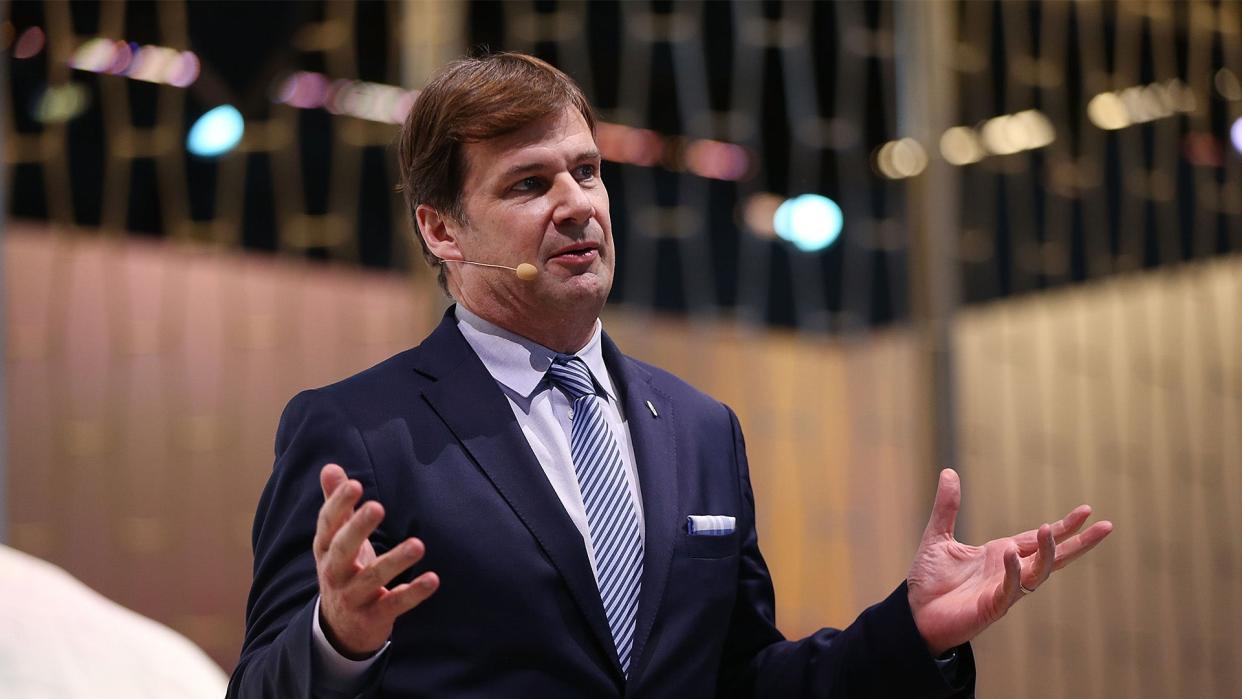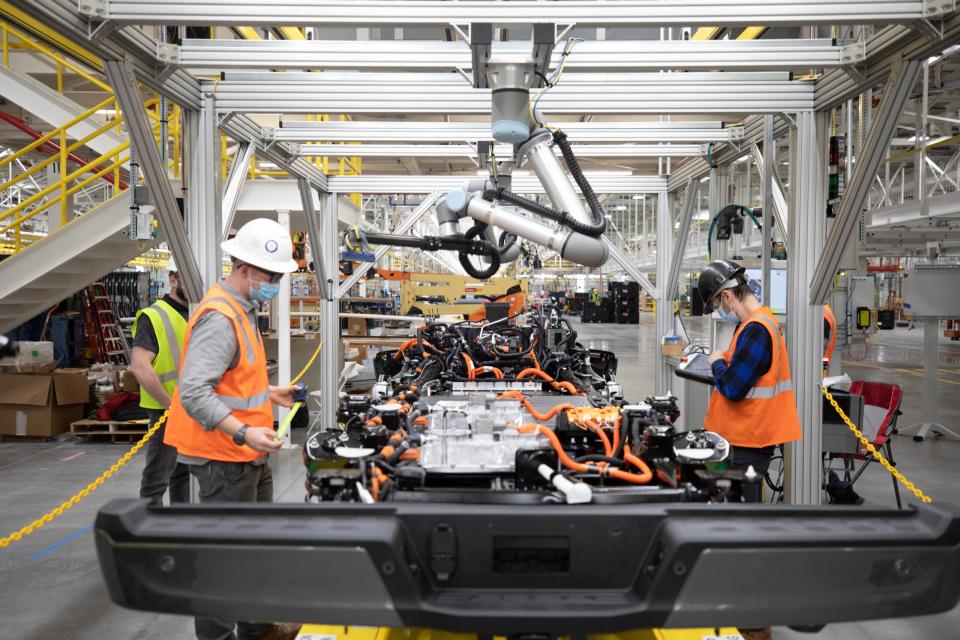Ford CEO Explains Why Legacy Automakers Take Forever to Issue OTA Updates

Over-the-air updates are (usually) wonderful. They mean fewer trips to the dealer to apply software fixes to your car and updating your vehicle with new features Tesla-style. More and more vehicles capable of receiving these updates are being built, but not all of these cars are getting them very frequently. Those that are—well, they seem to be running into weird problems. So what's the deal?
Ford CEO Jim Farley recently touched on this topic during an interview on the Fully Charged Podcast. The answer boils down to a deep-rooted manufacturing and procurement process long utilized by legacy automakers: outsourcing components.

Ford—like many other automakers—outsources a lot of its small electronic components. We're talking about engine control units, infotainment units, and other specialty bits that require not just building hardware, but also building machine-level code and complex software to interact with a vehicle.
"We farmed out all the modules that control the vehicles to our suppliers because we could bid them against each other," said Farley. "So Bosch should do the body control module, someone else to do the seat control module, someone else to do the engine control module. We have about 150 of these modules with semiconductors all through the car."
What makes matters even more complicated is that automakers don't just choose a single supplier to build all of these outsourced parts. As Farley noted, marques often use a bidding process to make specific parts more cost-effective. And at the end of the day, it's up to the automaker to make these parts talk to one another, which is a laborious task on its own.
Tesla—which popularized OTA updates with new features and a quick turnaround—earned some notoriety during the pandemic by manufacturing its own components that run Tesla's own custom-embedded software, effectively allowing it to overcome some supply chain issues. Of course, Tesla does still outsource some parts to manufacturing giants like Foxconn, but the majority of its software is reportedly sourced in-house.
For Ford (and many other OEMs), outsourcing critical components is a means of cost saving. The automaker doesn't have to worry about building the hardware, and it also doesn't have to factor in building and maintaining the underlying software embedded in the system. The flip side is that the software itself often isn't even owned by Ford, which makes issuing, testing, and pushing OTA updates even more complicated than you'd think.
"The problem is that the software is all written by 150 different companies and they don't talk to each other," Farley said. "So even though it says Ford on the front, I actually have to go to Bosch to get permission to change their seat control software. Even if I had a high-speed modem in the vehicle and I had the ability to write their software, it's actually their IP. We call it the 'loose confederation of software providers.' One-hundred-fifty completely different software programming languages. All the structure of the software is different. It's millions [of lines] of code."
https://youtu.be/8IhSWsQlaG8?t=1478
"What we've learned about electrification is it's actually not about propulsion systems; it's really about what you can do outside of the propulsion system, and also the software," said Farley. Note that the first generation of Ford's EVs were "analog products" and that Ford intends to ensure that its future products would be digital.
"That's why at Ford we've decided in the second-generation [EV] product to completely insource electric architecture," Farley continued. "To do that you need to write all the software yourself—but just remember car companies haven't written software like this, ever. They've never written software. So we're literally writing the software to operate the vehicle for the first time ever."
It would appear that Ford's future goal would be to ultimately collapse the software (and potentially hardware) side of electronics manufacturing back in-house. The good news is that owners of future Ford EV products may potentially avoid the long delays of receiving OTA updates, though this consequently means customers purchasing Ford's "analog" first-generation EV products may be stuck with the existing red-taped method of updates that they are already accustomed to.
Thankfully, those new customers might not have long to wait. Ford's next-generation EV architecture is said to release in 2025. The automaker will reportedly launch its Project T3 ("Trust The Truck") that year, which is built on its next-generation EV architecture and assembled at Ford's Blue Oval City mega campus.
Got a tip or question for the author? Contact them directly: rob@thedrive.com

